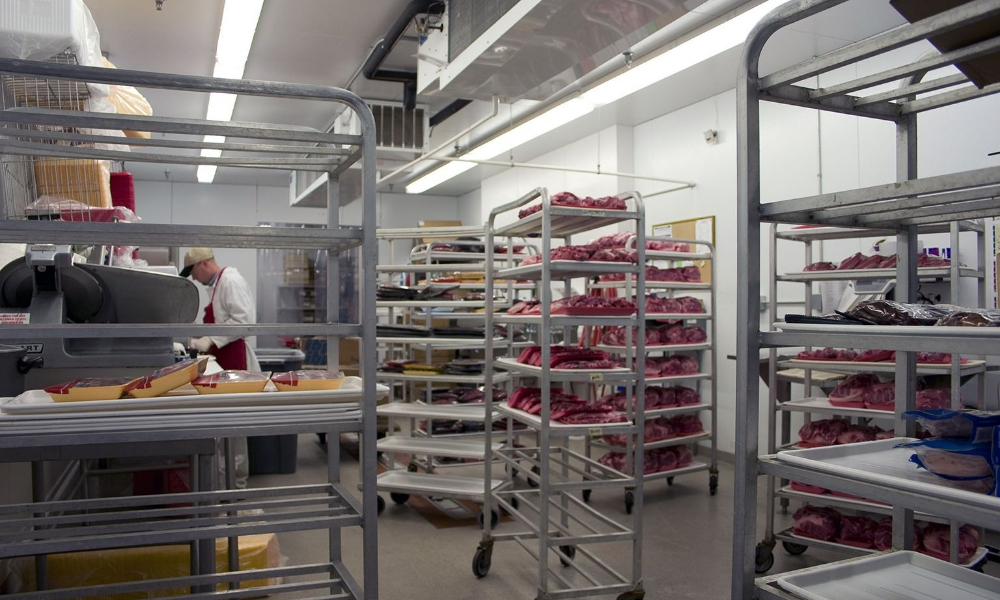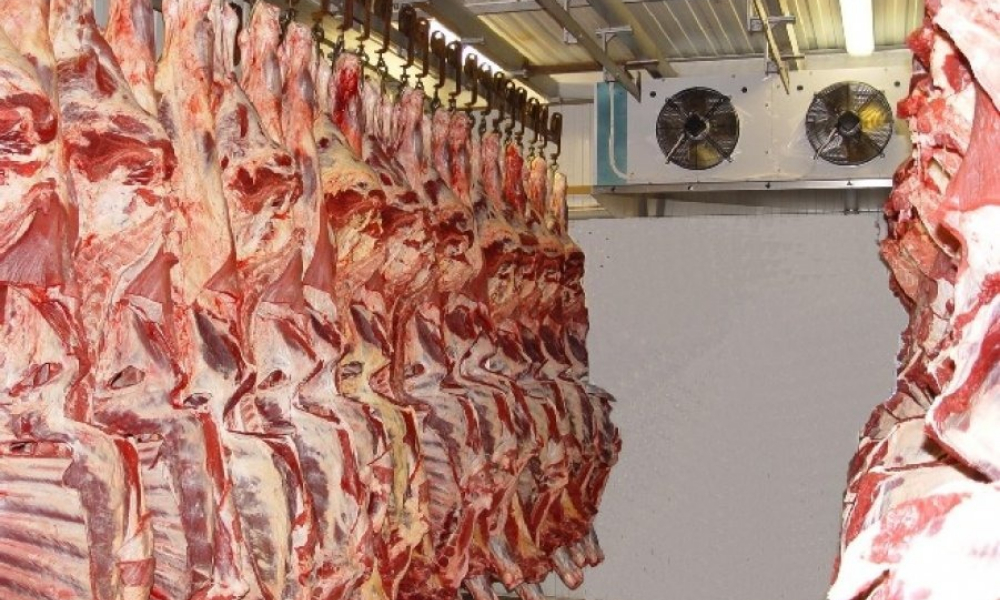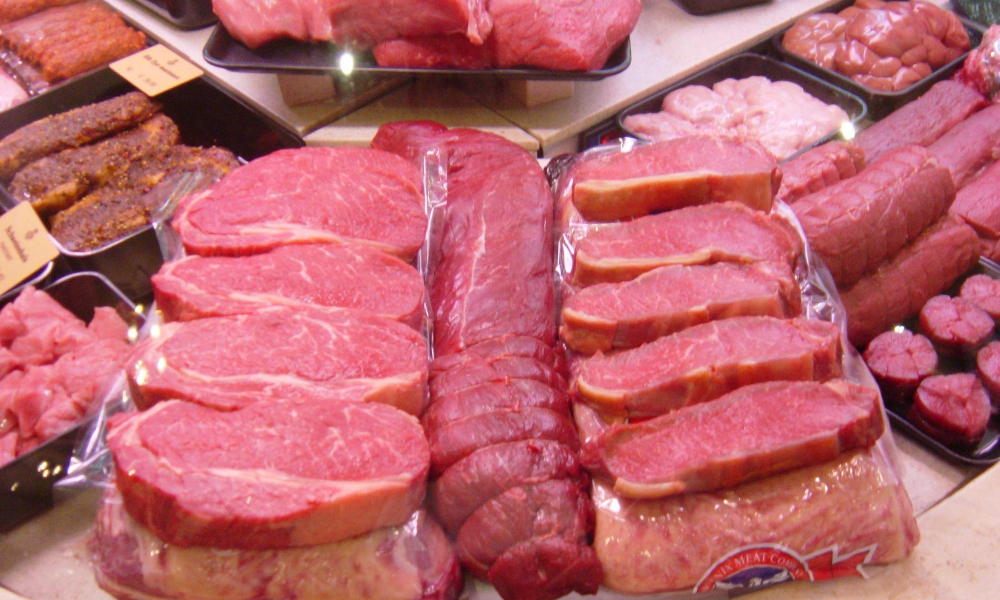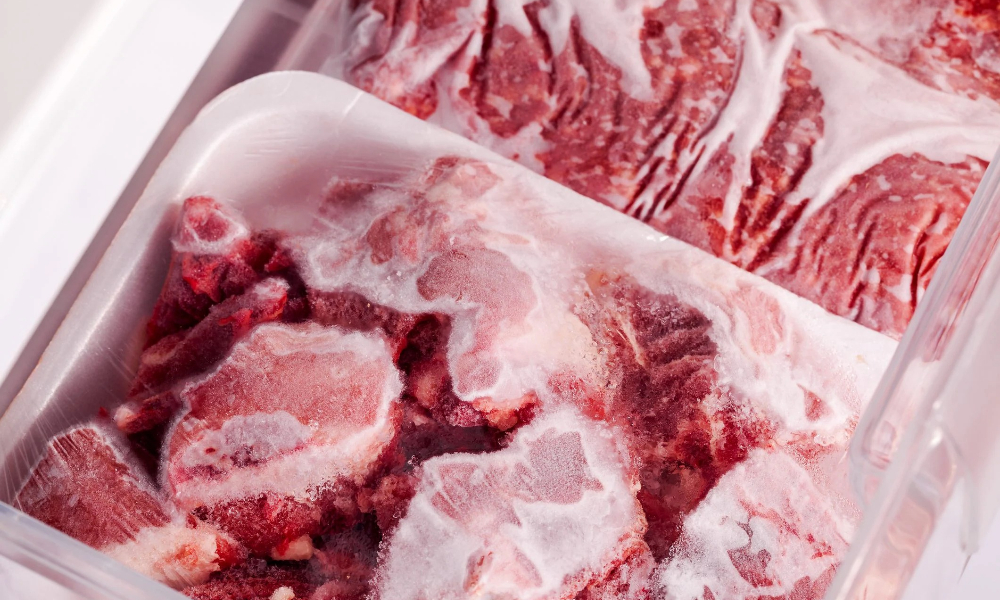Ideal conditions and key points for meat cold storage
Cold storage facilities specifically designed for meat are among the most important parts of the food supply chain created to safely and effectively preserve meat products. These cold storage facilities are designed to preserve the quality and nutritional value of meats for extended periods. Meat cold storage facilities may be designed and constructed in various shapes and types, but generally, the important types of meat cold storage facilities include:
1- Sub-zero meat cold storage
Meat freezer cold storage facilities are vital tools in the food supply chain. These cold storage facilities are designed to maintain the quality and health of meat at very low temperatures down to at least -18 degrees Celsius. Powerful cooling and heating systems are installed to ensure temperature maintenance, and the temperature is accurately controlled or monitored. Large and suitable storage space allows for a large number of products to be accommodated. Air management systems ensure uniform temperature throughout the space and prevent meat spoilage. Additionally, appropriate security and safety systems are installed to prevent unauthorized access to products, and compliance with industry standards and regulations is of paramount importance. Overall, these features are essential factors that must be considered in the design and operation of these cold storage facilities to ensure the preservation of the quality and health of meats.
2- Fresh meat cold storage (above freezing)
Cold storage facilities specifically designed for fresh meat are designed to maintain fresh meats at temperatures between 0-4 degrees Celsius. Due to the need for meat products to maintain freshness and eliminate spoilage opportunities, these cold storage facilities are of particular importance. They have temperature and air management systems that enable the preservation of meat quality and safety. As part of the food supply chain, these cold storage facilities play a very important role in providing safe and quality food products and assure consumers that they have access to fresh and safe meat products.
3- Long-term meat cold storage
This type of cold storage is used to store meats that require longer-term storage. Typically, these cold storage facilities are equipped with technologies and equipment that prevent tissue degradation and quality reduction in the longest possible time. In the field of long-term meat cold storage, there are two main types:
Steel structure with effective thermal insulation and concrete with suitable insulation system. Steel cold storage facilities are made of stainless steel or galvanized steel and insulated with thermal insulators such as rock wool and polyurethane foam. These structures have a long lifespan and high resistance to various environmental conditions.
In contrast, concrete cold storage facilities are made of concrete with suitable thermal insulation and prevent heat transfer using insulation systems such as rock wool or polyurethane foam.
4- Storage cold storage
These cold storage facilities are used to store meat products at temperatures between freezer and fresh meat temperatures. These types of cold storage facilities allow products to remain fresh continuously and prevent premature spoilage. Storage cold storage facilities can be underground or above ground. Underground cold storage facilities are known as an option for maintaining low temperatures without the need for additional energy. In contrast, above-ground cold storage facilities can quickly control or monitor temperature and use various energy sources such as electricity or gas to operate cooling systems.
Important and special features of cold storage for meat preservation
1- Special meat temperature control or monitoring
Accurate and stable temperature required for meat preservation, which must be carefully adjusted.
2- Effective thermal insulation
A structure that prevents heat transfer into or out of the cold storage and maintains the internal temperature.
3- Powerful cooling system
A system that can quickly adjust the temperature of the cold storage and operate under different environmental conditions.
4- Stable energy sources
Including electricity or gas used as energy sources for cooling systems.
5- Moisture management system
Control or monitor humidity inside the cold storage to a minimum to prevent meat spoilage.
6- Security and cleanliness
Programs and processes to maintain the security and cleanliness of the cold storage and meat.
7- Effective ventilation
An air system that can effectively distribute clean and cool air in the cold storage and prevent unpleasant odors and pathogens.
Important and efficient guidelines for optimal meat preservation in cold storage
Proper disassembly and packaging
Meat should be carefully disassembled and packaged to prevent contact with air and bacteria.
Appropriate temperature and humidity
Temperature should be set in a range of 0 to 4 degrees Celsius and relative humidity should be high at around 85%.
Separation of different meats
Different meats should be separated from each other to prevent crystallization or transmission of unpleasant odors.
Use of ice pieces
To prevent direct contact of meat with cold storage surfaces and temperature drop, ice pieces can be used.
Energy resource management
The use of high-efficiency cooling systems with low energy consumption is very important.
Cleanliness and hygiene
Cold storage and equipment must be regularly and hygienically cleaned to prevent contamination and meat spoilage.
Continuous monitoring
Temperature, humidity, packaging status, and meat health should be accurately monitored and adjustments made as needed.
How long can meat be preserved and transported?
The preservation and long-term transport of meat for several days or even weeks may depend on various conditions. These conditions include temperature, humidity, meat type, proper packaging, and cooling methods. For example, the use of specialized cold storage with controlled or monitored temperatures can prevent meat spoilage, while proper packaging using oxygen barrier films and boxes prevents contact with air and bacteria. Also, precise management of storage and continuous monitoring of hygienic conditions can maintain the quality and safety of meat even during long journeys. However, it should be noted that the long-term preservation and safety of meat depend on the precise conditions of storage and transportation, and it is better to always use optimal solutions.





